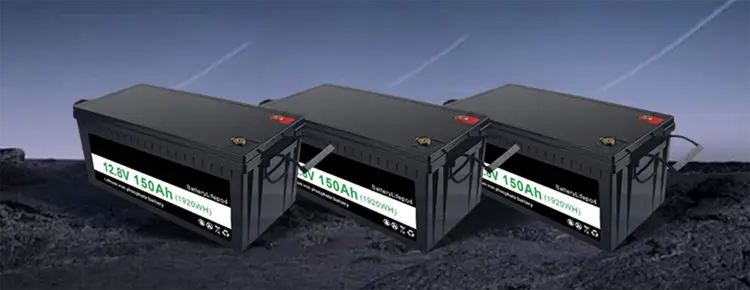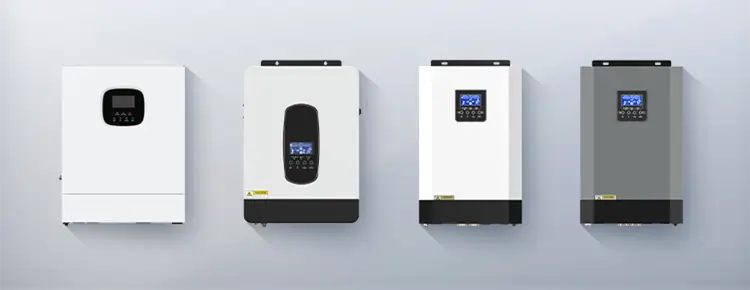



Blog
Hot Category
Latest Blog
31 Oct 2024
Nlelsen
Lead-acid battery and lithium iron phosphate battery are two common types of batteries. Due to the different materials used and the different invention times, they have very significant differences in many aspects, such as energy density, service life, charging time, volume and weight, and environmental protection. Below, I will give a brief.
introduction to each link.
First of all, energy density means the electrical energy that can be stored per unit weight or volume. In this regard. The energy density of lithium iron phosphate battery is significantly higher than that of lead-acid battery. The energy density of lithium iron phosphate battery is generally 200-260 Wh/kg, while the energy density of lead-acid battery is generally 50-70 Wh/kg. This means that if you want to buy a 1000wh battery, the weight of lithium iron phosphate is about 5kg, while the weight of lead-acid battery is about 20kg. In terms of volume, lead-acid battery is about 1.5 times that of lithium iron phosphate battery. Therefore, in terms of weight, volume and energy density, lithium iron phosphate battery has a very big advantage.
The service life of lithium iron phosphate batteries is much longer than that of ordinary lead-acid batteries. The cycle life of lithium iron phosphate batteries can reach more than 2,000 times, while the cycle life of lead-acid batteries is about 300 to 250 times, which means that the service life of lithium iron phosphate batteries can reach about 6 times that of lead-acid batteries under deep charging and deep discharging.
The charging speed and time of lithium iron phosphate batteries are much faster than those of lead-acid batteries. Lithium iron phosphate batteries can be charged to 80% of their power in one hour, while lead-acid batteries can only be charged to about 20% under the same conditions. In addition, lithium iron phosphate batteries have no memory effect and can be charged and discharged at any time, while lead-acid batteries have memory effects and need to be charged and discharged deeply regularly to maintain battery performance.
The weight and volume of lithium iron phosphate batteries are smaller than those of lead-acid batteries. The weight of lithium iron phosphate batteries is about 1/3 of that of lead-acid batteries, and the volume is about 2/3 of that of lead-acid batteries. This makes lithium iron phosphate batteries more advantageous in applications that require lightness and high power, such as electric vehicles and portable electronic devices3714.
The production of batteries is bound to cause environmental pollution. Lithium iron phosphate batteries have less impact on the environment during the production process. The production process of lead-acid batteries will produce harmful chemicals such as lead powder, electrolyte and wastewater, and emit harmful gases such as sulfur dioxide. After being scrapped, the discarded lead-acid batteries will cause greater harm to the environment, such as corrosion of the electrolyte and corrosion of internal waste materials. In contrast, lithium iron phosphate batteries do not have these problems.
The price of lead-acid batteries is much lower than that of lithium iron phosphate batteries of the same capacity. The price of lead-acid batteries is about 1/3 of that of lithium iron phosphate batteries. Intuitively, the price of lead-acid batteries may be very low, but if you consider the later maintenance, energy density, and long-term use costs, lithium iron phosphate batteries are more economical.
Lead-acid batteries are safer than lithium iron phosphate batteries. Lead-acid battery technology is quite mature and safer, while lithium iron phosphate batteries may have safety risks in some cases, such as overcharging and over-discharging1517. However, lithium iron phosphate batteries can be charged continuously for 48 hours at normal temperature without accidents such as battery expansion, leakage, and rupture.
The self-discharge rate of lithium iron phosphate batteries is low, with a monthly self-discharge rate of less than 3%, while the monthly self-discharge rate of lead-acid batteries is between 15% and 30%15. This means that lithium iron phosphate batteries have a stronger ability to retain power during storage, while lead-acid batteries need to be charged regularly during storage to prevent power loss15.
Lead-acid batteries and lithium iron phosphate batteries each have their own advantages and disadvantages. Which battery to choose depends on the specific application scenario and usage requirements. Lithium iron phosphate batteries have obvious advantages in energy density, service life, charging speed, weight and volume, and environmental protection, but the price is higher. Lead-acid batteries have more advantages in price and safety, and are suitable for cost-sensitive applications.